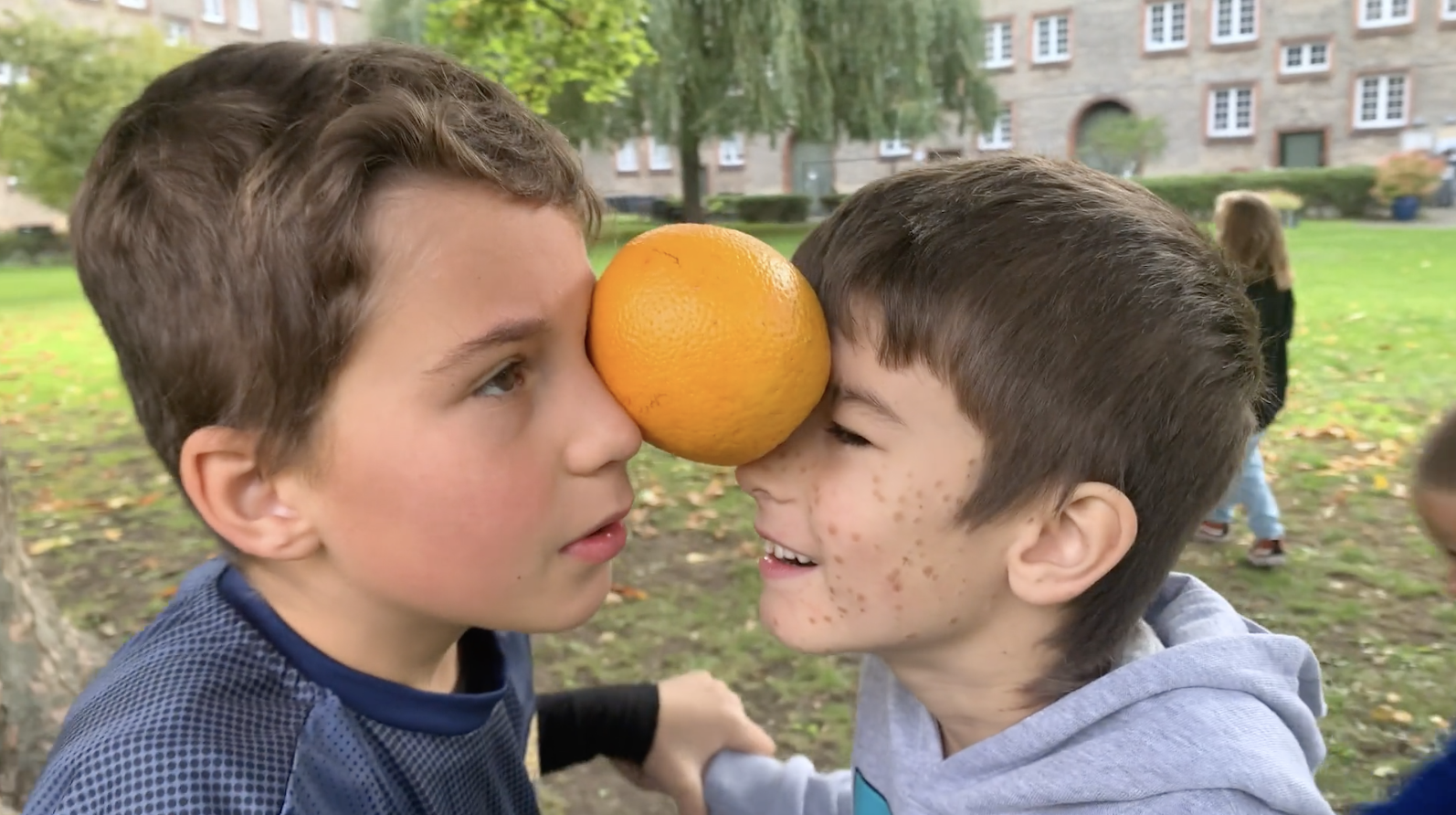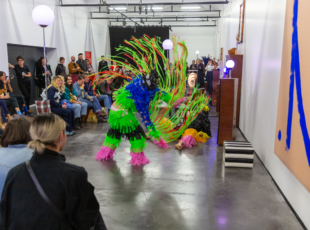With The Nature of the Game, Francis Alÿs takes us back to our childhoods

Article author :
Following on from his première presentation of The Nature of the Game at the Belgian pavilion during the 59th Venice Biennale last year, the Antwerp artist Francis Alÿs is unveiling a new version of the exhibition at the WIELS art centre in Brussels.
Playing, a primal need
A dark space, noisy. Screens. Films which flash up, permitting glimpses of skipping ropes, songs, snail racing, tyres, spades, sandcastles, dance steps, bursts of laughter. When we enter the exhibition hall, the first word which springs to mind is ‘chaotic’, quickly followed by ‘comforting’. The audience bustles about between the various installations: in front of the screens, people discuss, compare, remember. ‘Madame La Lune! Do you remember?’ cries a girl to her friend, pointing a finger at one of the screens showing a group of children whose arms are tangled up, patiently waiting for Madame La Lune to release them. Of course people remember. Like they remember hide-and-seek, hanging upside down from monkey bars, jumping with an elastic band round their ankles, having contests with other kids, and 1, 2,3 pianos. All of these games we learned one after the other, these playground, holiday and Saturday afternoon activities we played lightheartedly, with the sole aim of having fun. These pastimes which we invented, trying in some way to copy our environment and our society.
Children’s games form here and elsewhere
It is in particular this innocence, this authenticity, but also this transposition of reality which Francis Alÿs tries to look into with Children’s Games, a key part of the exhibition which he has been working on for some twenty years: over the course of numerous trips to the Democratic Republic of the Congo, Denmark, Hong Kong, Mexico and Belgium, and adding travels to Ukraine and to Iraq, the artist has established a large collection of mini-films showing, without any filter or artifice, the spontaneity of children’s games, in very different contexts. It is simultaneously raw, simple, effective and edifying. It is sublime, poignant.

Projected in a loop onto a raft of screens, the films follow one after the other at a mad speed. The hall is filled with the installation’s soundtrack: a combination of children’s laughter and the sounds of the playground, traffic, wheels moving forward. The eyes veer from one screen to another, trying to store up as much information as possible. It’s crazy, the games are everywhere. Whilst we recognize some – such as Children’s Game #6: Sandcastles, immortalised on the beaches of the North Sea – we are particularly touched by all these dances, races and mimes we hadn’t yet heard of: among others, there is the well-known Appelsindans, this Danish game whose aim is to dance, in a duo, whilst taking care not to let fall the orange you are holding against each other, or Nzango,a Congolese game which consists of anticipating a choreography inspired by traditional dances. Each video is stamped with a different mood, which gives a glimpse of an aspect of the local culture and resources. ‘Whereas adults are more likely to use speech to process experiences – whereas adults speak -, children play to assimilate the realities they encounter. Their games mimic, mock or defy the rules of the adult society that surrounds them,’ declares Francis Alÿs regarding his work. We share his opinion: children’s games are amongst the first social interactions which allow us to position ourselves, to communicate with each other. In a world becoming increasingly individualistic, where interactions take place more on line than in person, Francis Alÿs is capturing this moment of profound transition our society is undergoing and is attempting to archive the games of children before they disappear. A unique and necessary work of memory.

Between reality and fiction
With Children’s Games, the artist questions us about cultural identity, and makes us become aware of something essential: beyond their ludic character, children’s games bear witness to an epoch, a location, an event. Whilst some films refer us to traditional games – such as the well-known snail racing – others are testament to the violent nature of the contemporary reality experienced by children. You merely have to watch Children’s Game #23: Step on a Crack to be persuaded, the video shot in Hong Kong during the pandemic which bears witness to the loneliness of a little girl playing about by avoiding the yellow lines of a pedestrian crossing. By inventing a giant hopscotch, the child pulls herself out of the prevailing anxiety-inducing atmosphere, and tries to find a little respite from it. ‘The act of playing can also help them to cope with traumatic experiences such as those of war by creating a simulacrum of the real and turning the dramatic circumstances around them into a more fictional, ludic world. But the magical thing about a child’s game is that it holds no secrets, “it’s all there is”. We as adults should be faithful to the children we were; remember and trust that moment, the most precious one of our existence’, explains the artist.
After having scrutinised and commented on everything, we leave the main hall and enter an even darker alcove, in which is projected the cinematographic installation The Silence of Ani. A longer film which presents a game of hide-and-seek in the ruins of an ancient Armenian city-state on the border of present-day Turkey. Carrying little whistles, the children call to the birds and create the illusion that the town is coming back to life.
Video, an accessible and stimulating medium
Whilst in his artistic practice Francis Alÿs is used to navigating between techniques (painting, drawing, animation, performance), this time it is video that he turns his attention to. And it’s all to the good: both full of life and accessible to all types of audiences, this medium enables a practically automatic engagement with the subjects treated. All you need is open your eyes wide and let yourself be carried by the sounds issued by the videos to play along and give free rein to your creativity. And that is also what the majority of the children present do; sprawling on the roller stools available to the public, they start to hurtle from one side of the room to another and, even if it doesn’t seem like it, begin to play.
The Nature of the Game, a work both ethnological and geopolitical which reflects the artist’s social engagement, and is fully in keeping with his artistic approach. Immortalising the human behaviours that nobody notices is the mission given to himself by Francis Alÿs, who, since the end of the 1980s, has been drawing, painting and filming the world around him. In 1999, he began to capture scenes of children’s games around the world, which he is presenting this autumn at the WIELS art centre in Brussels. The Nature of the Game is exhibited until January 7.
A story, projects or an idea to share?
Suggest your content on kingkong.





